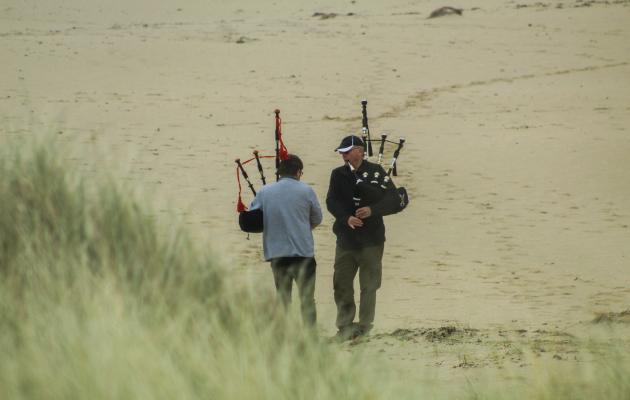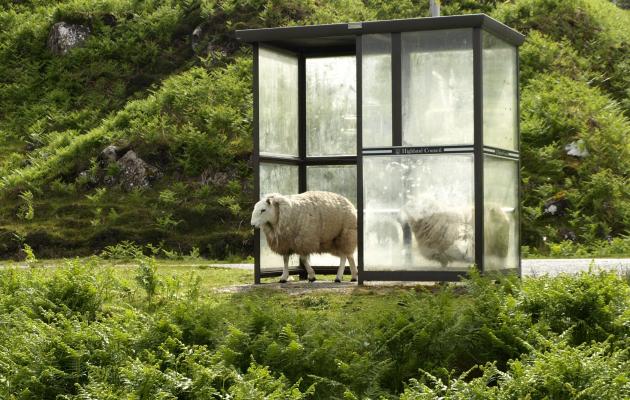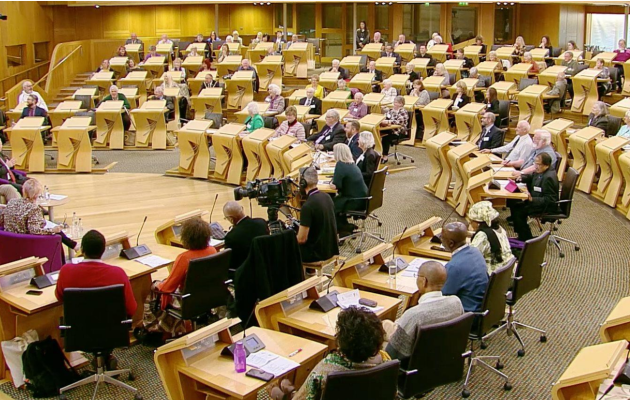Barbara Grieve, our Research and Finance Officer, has been researching a few case studies across rural and island Scotland. Here she explores the concept of 20 minute neighbourhoods and how, if at all, it applies to the isle of Jura.
'20 minute neighbourhoods' are places that are designed so residents can meet their day-to-day needs within a 20 minute walk of their home; through access to safe walking and cycling routes, or by public transport.[1]
The island of Jura is situated approximately eight miles off the mainland of Scotland and has a population of around two hundred and twenty-five. The main village, Craighouse, is located at the south-west end of the island. There are smaller settlements dotted around Jura, particularly at the north end; Ardlussa, Inverlussa, Lussagiven and Tarbet. These houses are connected to Craighouse, a thirty-minute drive away, by the A846; this is the only road across the whole island, and it is itself just a single track.
It's difficult to see from this brief description how Jura, along with many areas of rural and island Scotland, sits within the 20MN concept. However, the key principles - to create more connected communities that thrive through a vibrant local economy, improved health outcomes and greener active transport solutions – can be found in other less urban centric policies such as The Place Principle and Living Well Locally which have already been adopted by the Scottish Government.
It is fair to say that many of the services deemed as essential are not available on Jura. There is no secondary school on the island. Children travel to neighbouring Islay and attend extra-curricular clubs there too. There is no permanent bank or library either, instead there are mobile services. This might not be as convenient as permanent or online options but they offer opportunities for social interaction that would otherwise be lost. This will be the same for other rural and island communities around Scotland due to a smaller, more dispersed population.
There is a pragmatism amongst small communities around availability of services. There are not enough settlements at the north end of the island to warrant another shop. Rather than relocate to be nearer services, neighbours have found more localised informal solutions which work for them. For instance, there is an informal rota system for trips to Craighouse to buy milk and bread when it arrives. This provides regular interaction between neighbours as they take and deliver orders, and it cuts down emissions as only one vehicle is making the trip rather than half a dozen individual journeys. These are all solutions that connect islanders and enable people to stay on Jura and live well locally.
The key barriers Jura faces regardless of the concept are poor infrastructure and limited capacity. There is an active retired generation which suggests that older people feel able to age well locally there. However, the community is struggling to fill some key positions; postal delivery person, bus driver, distillery workers, and jobs within the hospitality industry. Work arounds include post being delivered by a retired postal worker when the regular postman is on leave - a temporary solution that shows the commitment and resourcefulness of the community but isn’t sustainable. It’s vital that a long-term solution is found as the insecurity of this service negatively impacts residents and businesses which sees health tests, legal documents, deliveries and orders are delayed.
Attracting the right people for vacant positions would require additional housing as there is not enough adequate housing for the current islanders. This again is a challenge as current planning policies are urban centric and do not translate well for rural and island communities. There are ten houses currently being built on Jura, to urban specifications. They require pavements that are of a specific width and a double-track road whilst the rest of Jura is serviced by a single-track road. These stipulations are important for larger settlements elsewhere within the local authority area but are inflexible - what is needed in Johnstone will be different to what is needed on Jura.
Jura has encountered other problems with planning too. Lussa Gin, a local business set up by islanders, sought planning permission for developments at their distillery to attract visitors to the north end of the island, creating local jobs and boosting the economy. The single-track A486, and state thereof, was cited as a reason for opposing their initial plans. Similar issues were experienced by Ardlussa Estate when developing their local biomass operations. The developments have since been permitted - the distillery attracts around 4,000 visitors per year and the biomass system removed the need to import expensive, dirty oil to heat multiple properties. But this required a greater investment of time and money from local businesses when the state of the road is, ultimately, outwith their control.
Alongside poor infrastructure, lack of capacity has also been an obstacle to improving the local economy. A community partnership with a local landowner to install a wind turbine was met with a number of challenges from planners, including in relation to the quality of the road. The required changes and appeals were beyond the capacity of the small, community-led initiative and the project was ultimately deemed unviable, despite a site and funding having been secured. Not only was this a lost opportunity to generate a stable income for the community, it is also hours of research and community consultations lost.
It’s not hard to see the appeal of 20MN. Most people, when asked, would prefer accessible local services, to shop locally, have access to reliable, greener transport options and as a result of these, see improved health outcomes but the 20MN concept is a solution for an urban environment. In Scotland, 17% of the population live in rural areas which makes up 98% of the land so it’s hard to see how this policy will work for the 17%. Rural and island communities need new and existing policies that are flexible and understand a ‘one size fits all’ approach doesn’t work.
Many thanks to Kirsten Gow.
[1] https://www.climatexchange.org.uk/research/projects/20-minute-neighbour….




